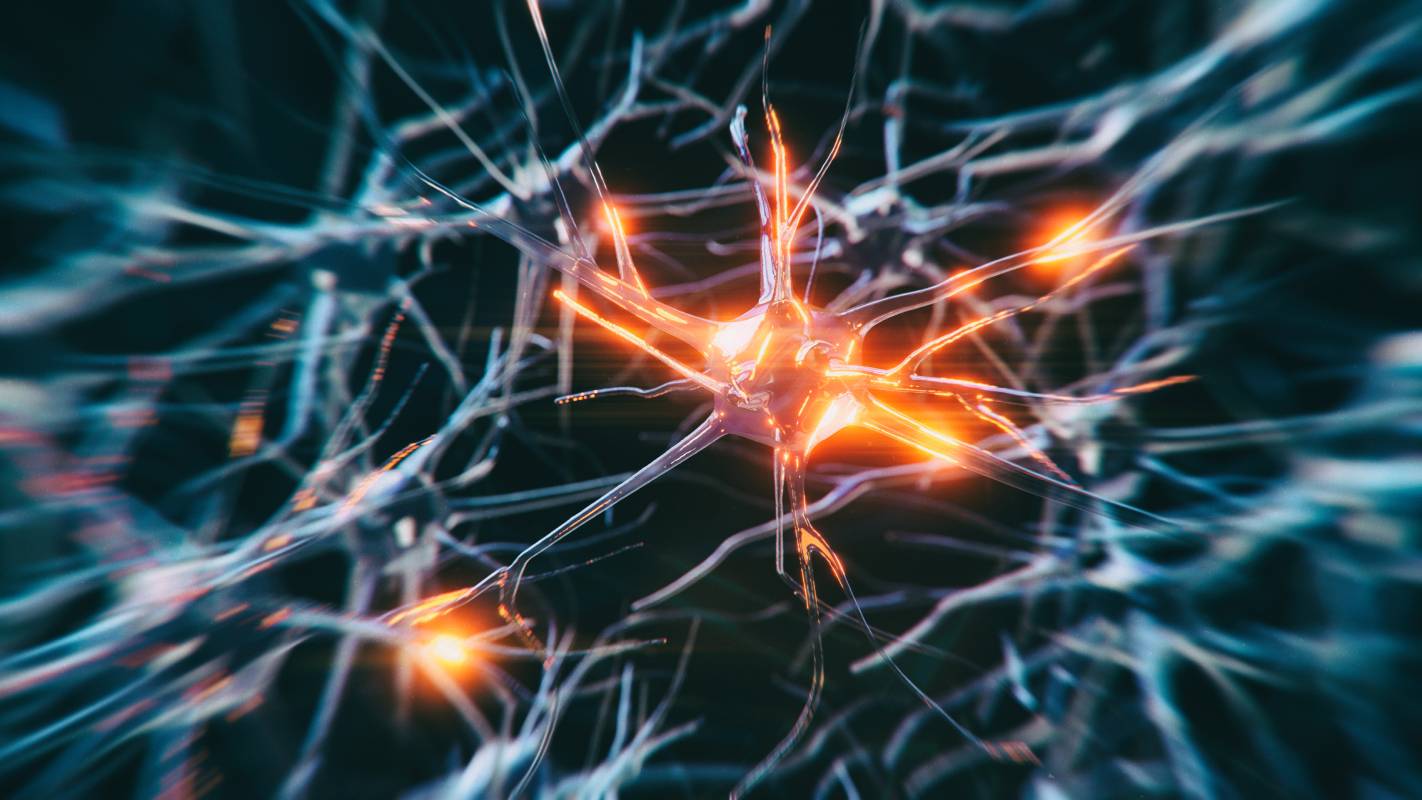Pain is a universal sensation inherent to most diseases, conditions, and many aspects of daily life. Pain can be subjective and psychological but has a definitive physiological basis; understanding the physiology behind pain is necessary for treating it in patients. Chen et al. note the importance of distinguishing between nociception [1], which is the detection of noxious stimuli by specialized nerve fibers called nociceptors, followed by the transmission of a nociceptive signal to the brain, and pain, which, in a technical sense, refers more specifically to the processing of these signals and the overall experience they cause.
Pain-inducing stimuli are generally classified as being mechanical, heat, or chemical. These stimuli, when present at a high enough intensity, will initiate the three basic events involved in the mechanism of pain: transduction, transmission, and modulation [2]. In transduction, a stimulus will cause damaged cells or tissue to release a number of chemicals, such as protein kinases and histamine, that convert (transduce) the stimulus into an electrical signal in the nerve that can be transmitted by the nervous system. Transmission and transduction operate in tandem: when a signal reaches the synapse, it is transduced to a chemical event (neurotransmitters), which, upon reaching the next neuron, transduces back to an electrical signal that transmits along this neuron. Modulation refers to the process in which pain signals are altered as they transmit, which may account for why two individuals respond differently to the same pain signal [3].
While the physiology of all pain typically resembles the abovementioned basic mechanism, different types of pain have characteristic origins, mechanisms, and symptoms. Neuropathic pain, also known as nerve injury or nerve impairment, involves damage to peripheral nerve fibers and/or central neurons [4] and can be caused by diabetes and central nervous system disorders (stroke and multiple sclerosis, for example) [5]. It is closely associated with allodynia, a condition in which repetitive non-painful stimulation of a particular nerve sensitizes it to perceive as painful a stimulus that would typically not be considered painful [6]. Inflammatory pain occurs in response to tissue damage and inflammation [7]. Acute inflammatory pain, which is normally intense and short-lived, is transmitted by the thin and myelinated A delta nerve fibers, while chronic inflammatory pain is mediated by C nerve fibers, which transmit slower impulses [2]. Several biochemical pathways have been implicated in inflammatory pain; in one, the protein TRPV1, which is expressed on certain nociceptive receptors, is activated in response to inflammatory pain and initiates a pain signal [8].
Just as there are several types of pain, there are several types of pharmaceutical pain relievers, which vary in their mechanisms of action and potency. Acetaminophen (brand name Tylenol) and nonsteroidal anti-inflammatory drugs (NSAIDs; aspirin and ibuprofen are examples) are both over-the-counter pain relievers. Acetaminophen inhibits cyclooxygenase-2 (COX-2), an enzyme involved in the inflammatory pain pathway [9], while NSAIDs inhibit enzymes in the COX family and interfere with other components of the inflammatory pathway, like chemokines and cytokines [10]. Opioids are another class of pain relievers, which operate by binding to the μ-opioid receptors in the brain and spinal cord [11]. While opioids are traditionally believed to be more potent than NSAIDs and are prescribed for more intense pain, such as postoperative pain, some research shows that NSAIDs can be more effective in reducing pain than opioids in certain situations [12], which may call into question this conventional wisdom. In addition, there are a growing number of non-pharmaceutical treatments for pain.
References
1. Chen, J. (Steven), Kandle, P. F., Murray, I., Fitzgerald, L. A. & Sehdev, J. S. Physiology, Pain. in StatPearls (StatPearls Publishing, 2022).
2. Yam, M. F. et al. General Pathways of Pain Sensation and the Major Neurotransmitters Involved in Pain Regulation. Int. J. Mol. Sci. 19, 2164 (2018), https://doi.org/10.3390/ijms19082164
3. Kirkpatrick, D. R. et al. Therapeutic Basis of Clinical Pain Modulation. Clin. Transl. Sci. 8, 848–856 (2015), https://doi.org/10.1111/cts.12282
4. Colloca, L. et al. Neuropathic pain. Nat. Rev. Dis. Primer 3, 17002 (2017), https://doi.org/10.1038/nrdp.2017.2
5. Neuropathic Pain: What It Is, Causes, Treatment. Cleveland Clinic https://my.clevelandclinic.org/health/diseases/15833-neuropathic-pain.
6. Waxman, S. G. The molecular pathophysiology of pain: abnormal expression of sodium channel genes and its contributions to hyperexcitability of primary sensory neurons. Pain Suppl 6, S133–S140 (1999), https://doi.org/10.1016/S0304-3959(99)00147-5
7. Polston, G. R. & Wallace, M. S. 66 – Analgesic Agents in Rheumatic Disease. in Kelley’s Textbook of Rheumatology (Ninth Edition) (eds. Firestein, G. S., Budd, R. C., Gabriel, S. E., McInnes, I. B. & O’Dell, J. R.) 1014-1033.e3 (W.B. Saunders, 2013), https://doi.org/10.1016/B978-1-4377-1738-9.00066-9
8. Guan, Z., Hellman, J. & Schumacher, M. Contemporary views on inflammatory pain mechanisms: TRPing over innate and microglial pathways. F1000Research 5, F1000 Faculty Rev-2425 (2016), https://doi.org/10.12688/f1000research.8710.1)
9. Hinz, B., Cheremina, O. & Brune, K. Acetaminophen (paracetamol) is a selective cyclooxygenase-2 inhibitor in man. FASEB J. 22, 383–390 (2008), https://doi.org/10.1096/fj.07-8506com
10. Osafo, N., Agyare, C., Obiri, D. D. & Antwi, A. O. Mechanism of Action of Nonsteroidal Anti-Inflammatory Drugs. Nonsteroidal Anti-Inflammatory Drugs (IntechOpen, 2017), doi:10.5772/68090
11. Bovill, J. G. Mechanisms of actions of opioids and non-steroidal anti-inflammatory drugs. Eur. J. Anaesthesiol. EJA 14, 9–15 (1997), DOI: 10.1097/00003643-199705001-00003
12. Moore, P. A. & Hersh, E. V. Combining ibuprofen and acetaminophen for acute pain management after third-molar extractions: Translating clinical research to dental practice. J. Am. Dent. Assoc. 144, 898–908 (2013), https://doi.org/10.14219/jada.archive.2013.0207
